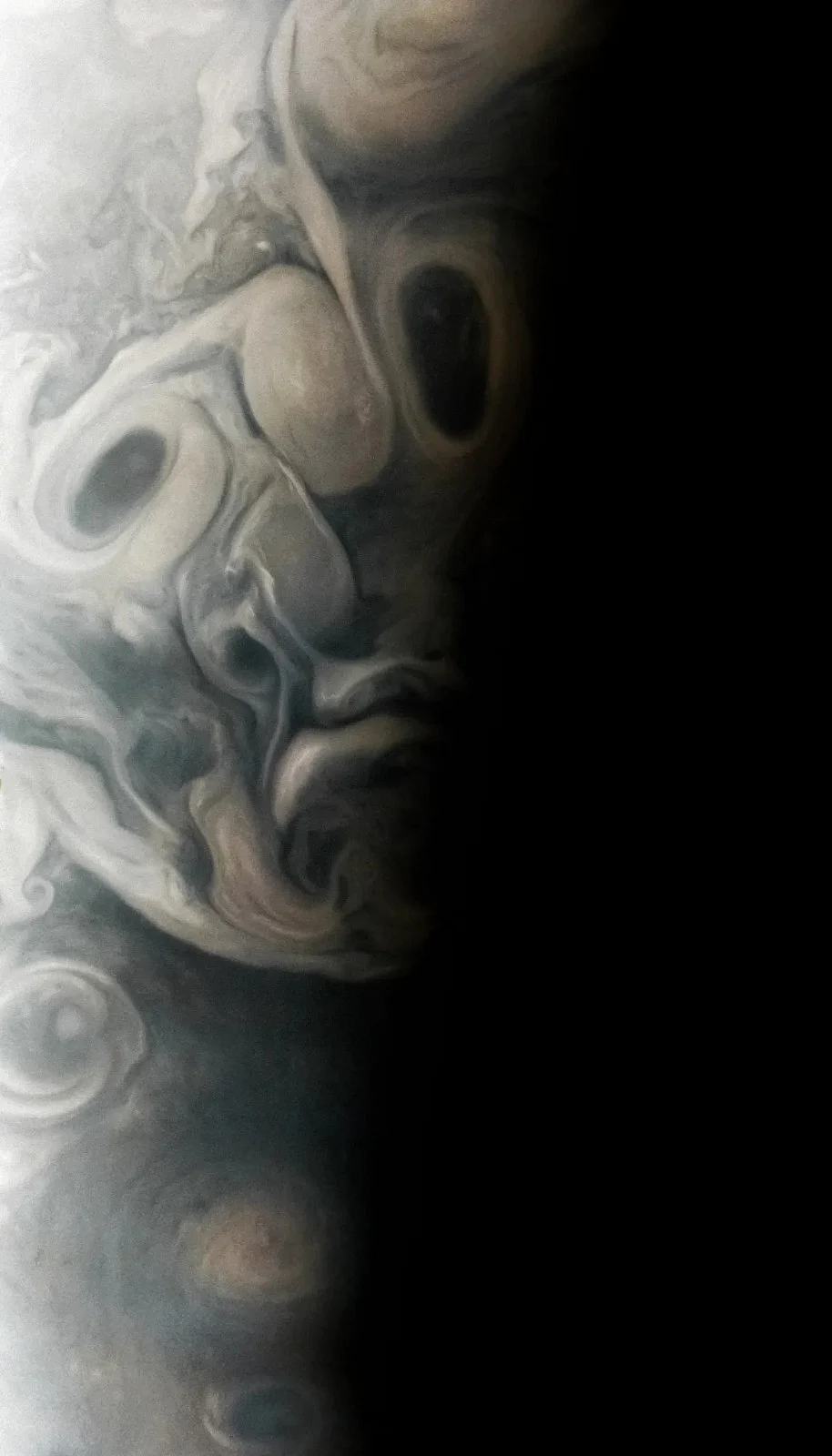NASA's Juno Mission Captures Scary 'Face' On Jupiter; See Viral Image Here
Citizen scientist Vladimir Tarasov made this image using raw data from the JunoCam instrument.

American space agency NASA on Thursday shared an image of Jupiter in which the swirling clouds of the planet appear to form a frowning human face.
NASA said that the Juno Mission captured this view in Jupiter's far north which resembles a Cubist portrait displaying multiple perspectives.
"We present the NASA Solar System image to you on Oct. 25—what would have been Picasso's 142nd birthday," the space agency said in a post on X.
Half of the image is in darkness on the planet's night side, almost making the face appear as if it's peering out from behind a door, NASA said.
OK. I like it. Picasso!
— NASA (@NASA) October 25, 2023
The #JunoMission captured this view in Jupiter's far north that resembles a Cubist portrait displaying multiple perspectives.
We present the @NASASolarSystem image to you on Oct. 25âwhat would have been Picasso's 142nd birthday: https://t.co/2WChdpAycc pic.twitter.com/fJkdlb974R
NASA said that Juno captured this view on September 7 during its 54th close flyby of Jupiter.
"The image shows turbulent clouds and storms along Jupiter’s terminator, the dividing line between the day and night sides of the planet. The low angle of sunlight highlights the complex topography of features in this region, which scientists have studied to better understand the processes playing out in Jupiter’s atmosphere," NASA said in a statement.

Image Source: NASA
As often occurs in views from Juno, Jupiter’s clouds in this picture lend themselves to pareidolia, the effect that causes observers to perceive faces or other patterns in largely random patterns.
Citizen scientist Vladimir Tarasov made this image using raw data from the JunoCam instrument. At the time the raw image was taken, the Juno spacecraft was about 4,800 miles (about 7,700 kilometers) above Jupiter’s cloud tops, at a latitude of about 69 degrees north.
Juno orbiter, launched in 2011 is studying the interior and origins of giant planet Jupiter for the first time. It has been orbiting Jupiter since it arrived in 2016.
Juno uses a spinning, solar-powered spacecraft in a highly elliptical polar orbit that avoids most of Jupiter’s high-radiation regions.
Although the main spacecraft was built by Lockheed Martin, Juno’s instruments and components came from all over the world. Juno shipped in pieces to the Kennedy Space Center in Florida, where it was assembled and put on top of an Atlas V 551 rocket that blasted it off into space.

